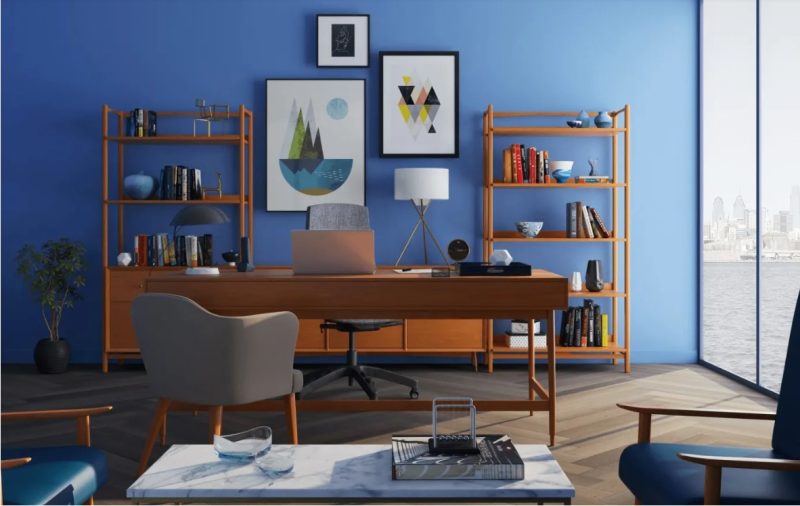Floating furniture is everywhere. It’s in living rooms, bathrooms, and even bedrooms. It looks sleek. It feels modern. And it gives the illusion of space. But behind that floating shelf, vanity, or cabinet, there’s one secret holding it all together – plywood.
Designers love floating furniture for good reason. It lifts everything off the floor. It makes cleaning easier. It gives storage without adding bulk. But the real magic lies in how it’s built. Most of the time, it starts with plywood sheets.
Why floating furniture works
Furniture that doesn’t touch the ground creates visual space. It makes rooms feel open and less cluttered. A floating TV unit, for example, clears up floor space and turns a blank wall into a stylish setup. A floating kitchen counter gives storage but also adds legroom. Even a floating nightstand can make a small bedroom feel spacious.
But design isn’t just about appearance. It’s about durability. And floating furniture has to be strong enough to hold weight without support from the floor. That’s where plywood comes in.
Plywood is the hidden hero
Plywood is stronger than it looks. It has layers glued together at alternating angles. That’s what gives it balance. It doesn’t crack easily. It doesn’t warp. It holds screws and brackets well. For floating shelves and wall-mounted units, this matters. You need a material that can take stress and stay put.
Designers trust plywood for furniture because it delivers consistency. You get uniform thickness. You get reliable performance. And it holds up even when shaped, drilled, or cut.
Why plywood sheets are ideal for floating furniture
- They support more weight than particle board or MDF
- They stay stable in moisture-prone areas like kitchens or bathrooms
- They allow for seamless finishes – paint, veneer, laminate, or natural wood
- They are easy to customise and modify
- They work well with hidden brackets and wall-mounting systems
Whether you are installing a floating study table or a wall-mounted wardrobe, plywood sheets give the foundation you need.
Plywood lets you customize your furniture
Floating furniture isn’t just about saving space. It’s also about personal style. With plywood, designers can cut, curve, or layer furniture units to match the room. From soft, rounded shelves to sharp-edged cabinets, everything is possible. You can make pieces that suit minimalist, industrial, or Scandinavian interiors.
Finishes also make a difference. Want a natural wood look? Use veneer. Want a glossy cabinet? Add a laminate. All of it sits perfectly on plywood. It doesn’t bubble. It doesn’t peel. That means your floating furniture looks good and lasts longer.
Plywood for furniture: more than just shelves
Plywood sheets are not limited to floating shelves or vanities. Designers use them to build entire floating systems – beds, kitchen islands, TV walls, and workstations. These structures depend on plywood’s strength and lightweight nature.
In a small studio apartment, one designer created a full floating bed platform with storage drawers underneath. The result? A clutter-free space with built-in function. In another project, a floating wall unit was made to hide wires and hold books. It looked clean and carried weight without any floor support.
This kind of design freedom is only possible when the material is dependable. And plywood for furniture continues to prove that it is.
Strength in disguise
Most floating furniture hides its core. You see the finish, not the frame. But the real strength is inside. Plywood can hold the weight of everyday items – books, dishes, toiletries, electronics – without showing stress. And because it’s layered, it’s more stable than solid wood in many situations.
Builders trust it. Carpenters rely on it. And designers keep coming back to it. When they want floating furniture that stays up and stays stylish, they choose plywood sheets.
It also makes installation easier
Wall-mounted furniture needs precision. You need to fix it to studs or a strong backing. Plywood’s firm core holds screws and fasteners without cracking. It also cuts cleanly. That means hinges, brackets, and mounting plates fit snugly and stay in place.
For modular furniture that needs to be assembled and fixed on-site, plywood helps reduce errors. It holds shape even after transport. And if you need to tweak the design later, it adapts without falling apart.
Real projects show real results
Designers are using plywood in creative ways. In a compact urban flat, a floating L-shaped desk was crafted from a single plywood board, mounted on invisible brackets. It gave the illusion of a suspended work zone. In a cafe renovation, floating seat booths were installed along the walls using plywood panels – creating more foot space while maintaining strength. In a retail store, plywood-based floating racks showcased shoes and accessories, keeping the floor open and easy to clean.
Each of these pieces had one thing in common – plywood for furniture was the material that held everything together.
Conclusion
Floating furniture changes how we use space. It makes rooms feel lighter, neater, and more modern. But it needs a strong, reliable base. CenturyPly offers plywood sheets that bring these designs to life. Whether it’s a wall-mounted shelf or a full floating bed frame, CenturyPly provides the quality and consistency that designers trust.



